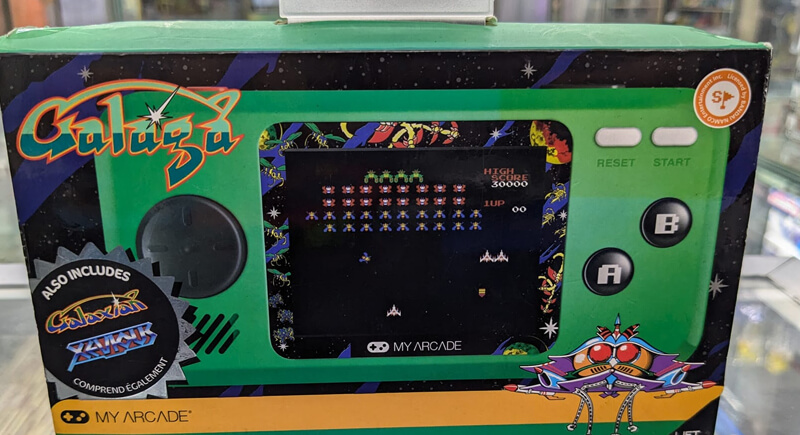15 Classic Arcade Games That Ate All Our Quarters
It’s hard to think of a time when video games weren’t at our fingertips, but back in the golden age of arcades, they were a communal experience. Crowds gathered around glowing screens, rooting for players who seemed destined to break the high score—or lose it all in a heartbeat. These games didn’t just entertain; they became cultural landmarks. Here are 15 classic arcade games that turned casual afternoons into epic quests and ate more quarters than we care to admit.
Pac-Man (1980)

Credit: Reddit
When Pac-Man hit arcades in 1980, it did something few games had managed before—it appealed to everyone. The simple premise of guiding a yellow chomper through a maze while avoiding ghosts was instantly addictive. The game’s genius lay in its balance: easy to play but devilishly hard to master. It wasn’t just a game; it was a global phenomenon, inspiring merchandise, TV shows, and even pop songs.
Space Invaders (1978)

Credit: Wikimedia Commons
Few games captured the imagination like Space Invaders. Its premise—fending off rows of descending alien ships—tapped into the sci-fi craze of the late ‘70s. The tension grew as the aliens moved faster with every passing second, and the haunting, repetitive soundtrack only made the stakes feel higher. Players lined up to test their reflexes and save the pixelated world from invasion.
Donkey Kong (1981)

Credit: Wikimedia Commons
Before he was Mario, the mustachioed plumber was simply Jumpman, dodging barrels to rescue a damsel from the clutches of a giant gorilla. Donkey Kong wasn’t just entertaining; it was groundbreaking. It introduced story-driven gameplay to the arcade world and gave us one of gaming’s most enduring characters. The climbing mechanics and timing challenges made every level feel like an event.
Galaga (1981)

Credit: Facebook
If Space Invaders laid the groundwork, Galaga perfected it. This spaceship shooter let players face off against intricate formations of alien ships, with the added challenge of avoiding capture. Its strategic depth, coupled with fast-paced action, made it a favorite for players who craved a challenge beyond aimless shooting. Galaga didn’t just eat quarters—it devoured them.
Asteroids (1979)

Credit: Facebook
Simple in design but endlessly engaging, Asteroids put players at the helm of a spaceship surrounded by floating rocks. The goal? Shoot the asteroids into smaller pieces while staying alive. The game’s physics-based movement added a layer of strategy, as players navigated the screen’s edges and timed their shots. It was pure arcade magic.
Defender (1981)

Credit: Wikimedia Commons
In Defender, you weren’t just shooting aliens—you were saving lives. This side-scrolling game tasked players with protecting stranded astronauts from alien abductors. The fast pace and intricate controls created a sense of urgency, making every rescue feel like a small victory. It was a test of multitasking, reflexes, and nerves.
Centipede (1981)

Credit: Facebook
With its colorful visuals and escalating difficulty, Centipede offered a unique blend of action and strategy. Players shot at a segmented centipede weaving through a field of mushrooms, which added to the chaos. The game’s intensity ramped up quickly, keeping players glued to the screen as they tried to clear each wave.
Ms. Pac-Man (1982)

Credit: Facebook
The follow-up to Pac-Man was more than just a reskin. Ms. Pac-Man added new mazes, smarter ghosts, and a dash of personality that elevated the original formula. It wasn’t just a sequel—it was an evolution. Players loved the added challenge, and the game quickly cemented its place as an arcade classic.
Frogger (1981)

Credit: Facebook
There’s something universally appealing about guiding a frog to safety across busy highways and treacherous rivers. Frogger combined precision and timing with a touch of humor, creating a game that was as fun to watch as it was to play. Its simple mechanics masked its difficulty, and those final leaps to safety always felt rewarding.
Street Fighter II (1991)

Credit: Facebook
Arcades became battlegrounds when Street Fighter II arrived. This competitive fighting game let players choose from a roster of diverse characters, each with unique moves and abilities. The introduction of combos and counterattacks added a layer of strategy, while the multiplayer aspect fostered rivalries that kept the quarters flowing.
Mortal Kombat (1992)

Credit: Facebook
If Street Fighter II was the start of arcade fighting games, Mortal Kombat turned it into a spectacle. Known for its digitized graphics and brutal finishers, the game pushed boundaries in both gameplay and controversy. Players couldn’t resist testing their skills (and their friends’) in this high-stakes arena.
Tetris (1984)

Credit: Wikimedia Commons
The appeal of Tetris lies in its elegant simplicity. The falling blocks needed to be arranged into lines before the screen filled up—easy, right? Not quite. As the pieces dropped faster, players scrambled to make decisions in real-time. Though originally a computer game, Tetris made its mark in arcades, drawing in anyone with a knack for spatial puzzles.
Double Dragon (1987)

Credit: Facebook
Double Dragon wasn’t just a game—it was a co-op adventure. Players teamed up to brawl through waves of enemies, each punch and kick inching them closer to rescuing a kidnapped damsel. The teamwork aspect made it a go-to for friends looking to take on a challenge together.
Gauntlet (1985)

Credit: Facebook
Few games captured the camaraderie of arcade play like Gauntlet. This dungeon crawler allowed up to four players to choose between a warrior, wizard, valkyrie, or elf, each with unique abilities. The need for teamwork and the ever-present threat of running out of health made every session an adventure.
Dragon’s Lair (1983)

Credit: Facebook
Unlike its pixel-heavy peers, Dragon’s Lair stood out with hand-drawn animation that looked like it came straight from a movie. Players controlled Dirk the Daring as he navigated quick-time events to rescue a princess. While its gameplay was polarizing, there’s no denying its impact as one of the most visually stunning arcade games of its time.